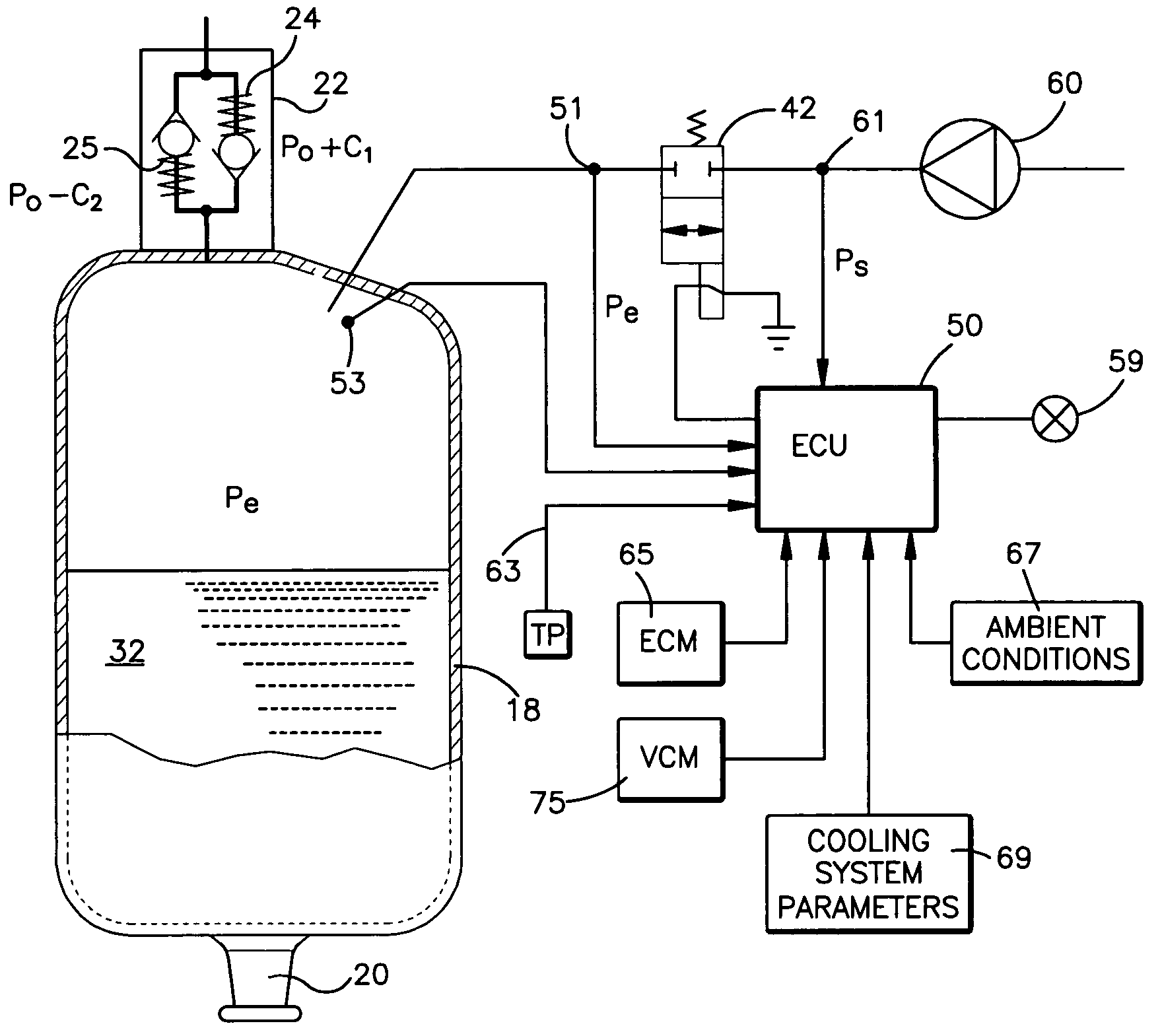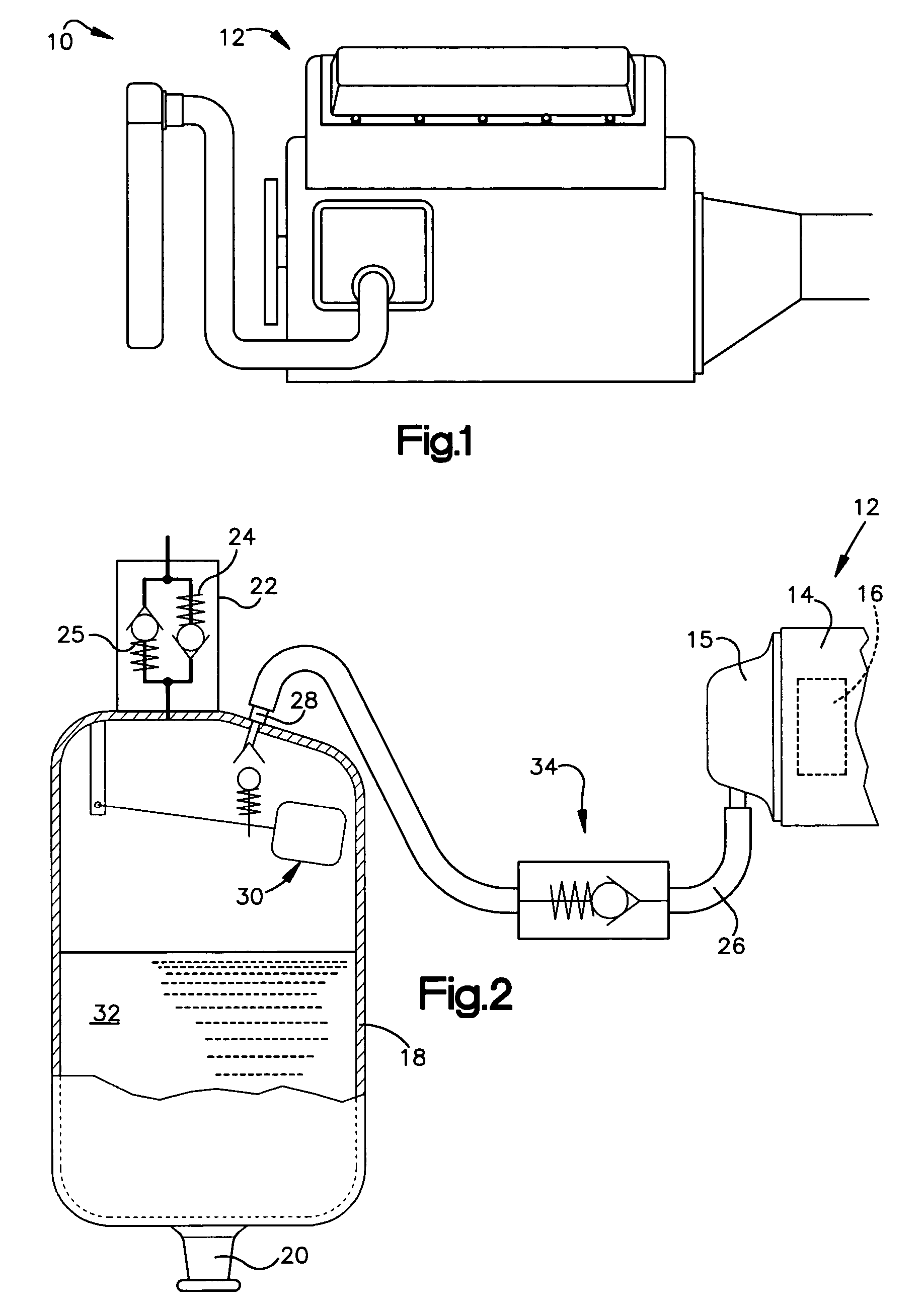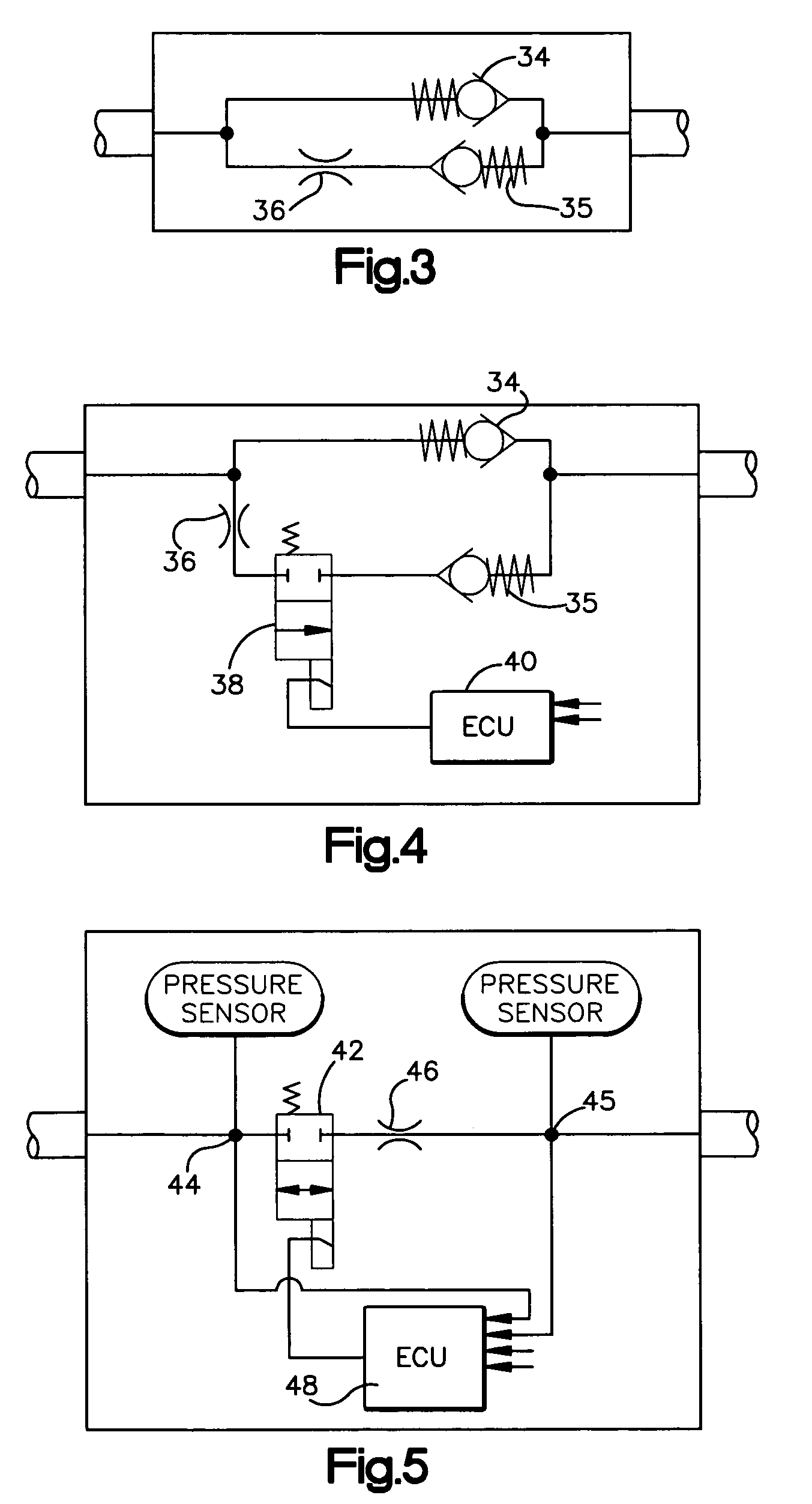Engine cooling system
a technology for cooling systems and engines, applied in the direction of machines/engines, mechanical equipment, cylinders, etc., can solve the problems of increasing the amount of heat dissipation capacity that can be achieved with traditional approaches, increasing the amount of heat dissipation capacity, and system passiveness, so as to reduce the decay of pressure in the coolant system
- Summary
- Abstract
- Description
- Claims
- Application Information
AI Technical Summary
Benefits of technology
Problems solved by technology
Method used
Image
Examples
Embodiment Construction
[0024]Referring to the drawings and FIG. 1 in particular, a schematic of an engine and cooling system for an over the highway truck or tractor is shown generally at 10. The truck is equipped with a turbo charged engine 12. As shown somewhat schematically in FIG. 2 the engine 12 is equipped with a cylinder head 14 having an air intake manifold 15. The engine 12 is equipped with a turbo charger pressurizing the intake manifold 15 as shown schematically at 16 in FIG. 2.
[0025]The engine 12 is equipped with a cooling system which includes an expansion tank 18, FIG. 2. The expansion tank 18 is a standard tank including an outlet 20 connected to an inlet of a water or coolant pump. The tank 18 includes a fill opening equipped with a pressure cap 22. In the disclosed embodiment, the cap 22 includes a tank pressure relief and coolant overflow valve 24 and a vacuum relief valve 25 as is now conventional in coolant systems.
[0026]A conduit 26 connects the intake manifold 15 to the expansion tan...
PUM
 Login to View More
Login to View More Abstract
Description
Claims
Application Information
 Login to View More
Login to View More - R&D
- Intellectual Property
- Life Sciences
- Materials
- Tech Scout
- Unparalleled Data Quality
- Higher Quality Content
- 60% Fewer Hallucinations
Browse by: Latest US Patents, China's latest patents, Technical Efficacy Thesaurus, Application Domain, Technology Topic, Popular Technical Reports.
© 2025 PatSnap. All rights reserved.Legal|Privacy policy|Modern Slavery Act Transparency Statement|Sitemap|About US| Contact US: help@patsnap.com



